Posted: May 6th, 2012 | 1 Comment »
The May issue of the UK’s Literary Review has a review of Midnight in Peking by Jonathan Mirsky – interestingly they decided to put Midnight on their cover – and here’s what the artist came up with…I’ll let you all decide!!…..
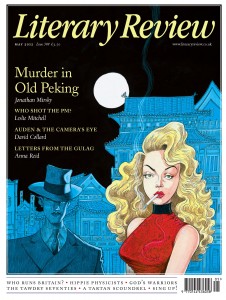
Posted: May 5th, 2012 | 1 Comment »
Kennedy Terrace is sadly evidence that Hong Kong is still knocking down with abandon despite some improvements to non-residential attitudes to heritage. Several buildings, designed as individual residences, built between 1925 and 1937 were pretty much all that remained of the once quite glorious Kennedy Terrace. They had been left abandoned – the great trick of the anti-preservationist, creating a slum by neglect – while (in one of the world’s densest retail, eating and living areas) no alternative use could apparently been found for the structures. A banner had appeared on the frontage of the buildings some time ago announcing “Revitalising Hong Kong’s Old Buildings” – a sad joke perhaps? Weeks later the buildings were rubble. New apartment buildings, smaller and expensive will now be built – great!
Here’s some various Kennedy Terrace buildings:
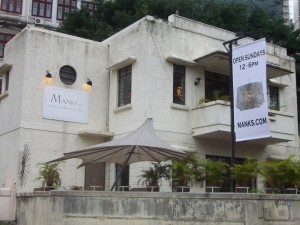
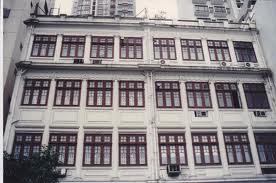
Posted: May 4th, 2012 | No Comments »
a few days break in the Midnight in Peking US tour so let’s catch up on some heritage news gleaned on a recent Hong Kong trip…
The Central Market issue in Hong Kong rolls on with shop keepers there finding life precarious. The 72-year-old building is supposed to be being renovated by the Urban Renewal Authority. The aim is to rezone the market as a “historic area” – an obvious thing to do as the Central Market is by far the best piece of architecture in the Bauhaus style left in Hong Kong (built in the late 1930s) and at that time one of the biggest and most modern meat markets in Asia (comparable only really to Shanghai’s abattoir – now the failed 1933 development in Hongkou).
The Central Market is a four storey building with rounded corners typical of the period and style. The internal courtyard and staircases are particularly impress (see this pdf for some internal pictures of the market). The building was so well designed and maintained after the war that it has hardly been changed inside.
Anyway, shop keepers are up in arms about being moved swiftly without being able to let their customers know where they’re going while (surprise, surprise) property developers want the land for (uuggghh!!) a car park or a supermarket.
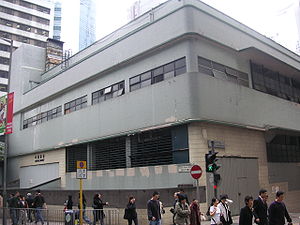
frontage onto Des Voeux Road
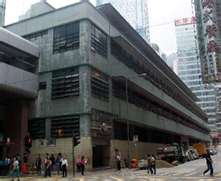
Side of the market down
Posted: May 4th, 2012 | 2 Comments »
I’ll be at the Tattered Cover bookstore in Denver, CO on 2526 East Colfax Avenue on May 4th at 7.30pm. And delighted to be so invited of course….

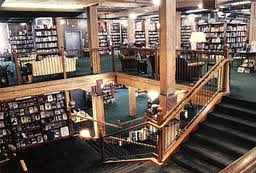
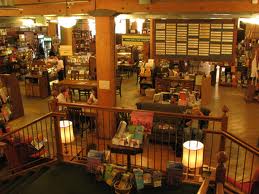
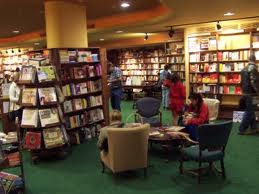
Posted: May 3rd, 2012 | No Comments »
Obviously this book , A Dance with the Dragon – is of interest to me and I must admit to having had a series of chats with the author Julia Boyd over the years. I do hope the book is successful as it’s obviously a subject that fascinates me – nice job on the cover I reckon…

Julia Boyd tells the fascinating tale of the foreign community surviving in Peking between the end of the Ching Dynasty and Mao s communist revolution. It is a great story very well told – turmoil behind, turmoil ahead and turmoil all around. –Chris Patten, Chancellor of Oxford University, Chairman of the BBC and former Governor of Hong Kong
Based on a treasure-trove of original sources, this book gives an enthralling insight into the expatriate community in Peking during the half-century before the triumph of Mao. Anyone who wants to understand China’s relationship with foreigners, today as well as yesterday, should read it. –Piers Brendon, author of The Decline and Fall of the British Empire
A fascinating account sourced from many previously unpublished letters and archives. Boyd’s characters flit on the surface of the city like water beetles, unaware of the depths below. –Frances Wood, Curator of Chinese Collections, British Library, author of China’s First Emperor and His Terracotta Warriors.
With its wild, dissolute, extravagant group of fossil hunters and philosophers, diplomats, dropouts, writers and explorers, missionaries, artists and refugees, Peking s foreign community in the early 20th century was as exotic as the city itself. Always a magnet for larger than life individuals, Peking attracted characters as diverse as Reginald Johnston (tutor to the last emperor), Bertrand Russell, Pierre Loti, Rabrindranath Tagore, Sven Hedin, Peter Fleming, Wallis Simpson and Cecil Lewis. The last great capital to remain untouched by the modern world, Peking both entranced and horrified its foreign residents – the majority of whom lived cocooned inside the legation quarter, their own walled enclave, living an extraordinary high-octane party lifestyle, suffused with martinis, jazz piano and cigarettes, at the height of the Jazz Age. Ignoring the poverty outside their gates, they danced, played and squabbled among themselves, oblivious to the great political events unfolding around them and the storm clouds looming on the horizon that were to shape modern China. Others, more sensitive to Peking s cultural riches, discovered their paradise too late when it already stood on the brink of destruction. Although few in number, Peking’s expatriates were uniquely placed to chart the political upheavals – from Boxer Rebellion in 1900 to the Communist victory of 1949 that shaped modern China. Through extensive use of unpublished diaries and letters, Julia Boyd reveals the foreigner’s perceptions and reactions – their take on everyday life and the unforgettable events that occurred around them. This is a dazzling portrait of an eclectic foreign community and of China itself – a magnificent confection, never before told.
Posted: May 3rd, 2012 | No Comments »
We did it – after one week in the US – #30 on the New York Times Print Hardcover bestseller list, #19 on the E-Book bestseller list, #35 on the Combined Paperback and Hardcover bestseller list and #26 on the Combined Print and E-Book bestseller list.
Now take out the political ranters, the cancer survival memoirs, the how to achieve your life goals books and that’s not a bad showing.
Complete lists for the week here
Posted: May 2nd, 2012 | 2 Comments »
The thing about this US book tour for Midnight in Peking is that it’s basically a tour of the coolest bookstores in America!! The Poisoned Pen in Scottsdale (where I’ll be tomorrow evening May 3rd) has to be one of them too!!
More details here
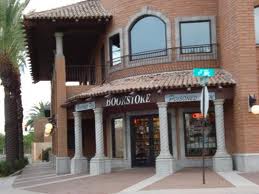
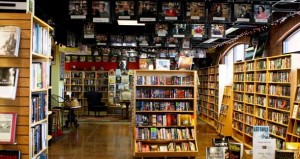
Posted: May 2nd, 2012 | No Comments »
Great to see Matthias Messmer’s Jewish Wayfarers in Modern China has been published. Matthias is a Shanghailander of long standing and has long been a man always keen to tease out historical facts, track down architecture and roam the city. This book looks fascinating indeed…
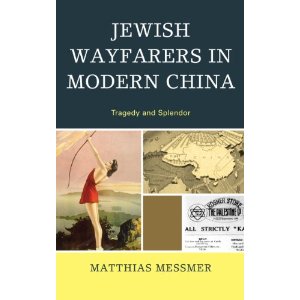
Jews in China doesn’t sound like an obvious topic at first blush but Messmer has compiled an extensive, admirable and fascinating collection of vignettes of a displaced people surviving and living through the most tumultuous time in China’s history.
(A. Tom Grunfeld, Empire State College )
In the pages of this amazing and unique book men and women come alive who arrived in China for longer or shorter periods of time. Hailing from Europe and elsewhere, there were merchants and journalists, physicians and writers, adventurers and communists, and refugees from Nazi Germany. They witnessed one of the most turbulent periods in Chinese history, their lives forever affected by what they saw and experienced. In vivid portrayals the author masterfully allows us glimpses of such women as Emily Hahn and Ruth Weiss, or men like Harold Isaacs and Theodore White and how they viewed ‘their’ China. Many like Willy Tonn regretfully left the China they had come to consider their own. Others like Israel Epstein and Sidney Shapiro remained in the country which they loved and where they felt they belonged. This is a superbly stimulating book.
(Irene Eber, Louis Frieberg Professor of East Asian Studies, The Hebrew University of Jerusalem )
Review
“Jews in China doesn’t sound like an obvious topic at first blush but Messmer has compiled an extensive, admirable and fascinating collection of vignettes of a displaced people surviving and living through the most tumultuous time in China’s history.” —A. Tom Grunfeld, Empire State College
“In the pages of this amazing and unique book men and women come alive who arrived in China for longer or shorter periods of time. Hailing from Europe and elsewhere, there were merchants and journalists, physicians and writers, adventurers and communists, and refugees from Nazi Germany. They witnessed one of the most turbulent periods in Chinese history, their lives forever affected by what they saw and experienced. In vivid portrayals the author masterfully allows us glimpses of such women as Emily Hahn and Ruth Weiss, or men like Harold Isaacs and Theodore White and how they viewed “their” China. Many like Willy Tonn regretfully left the China they had come to consider their own. Others like Israel Epstein and Sidney Shapiro remained in the country which they loved and where they felt they belonged. This is a superbly stimulating book.” —Irene Eber, Louis Frieberg Professor of East Asian Studies, The Hebrew University of Jerusalem
About the Author
Matthias Messmer was born 1967 in St. Gallen, Switzerland. He received his M.A. in Political Science, Law and Economics (St. Gallen) and Ph.D. in Social Sciences (Konstanz). His research is focused on intercultural subjects and topics related to China and Chinese culture. Dr. Messmer is also affiliated with the University of Fribourg (Switzerland) as Senior Research Fellow and his projects include cultural documentation and criticism in the form of writing and photography. He has previously published books (in German) such as Soviet and Post-Communist Antisemitism (1997) and China–West-Eastern Encounters (2007).












